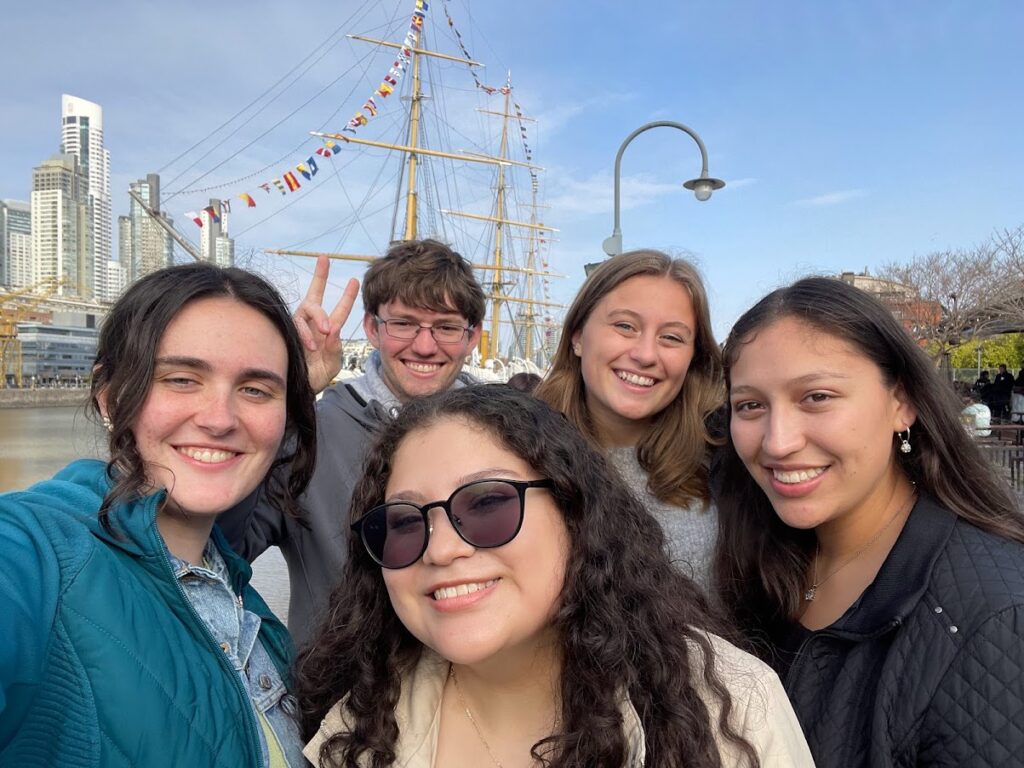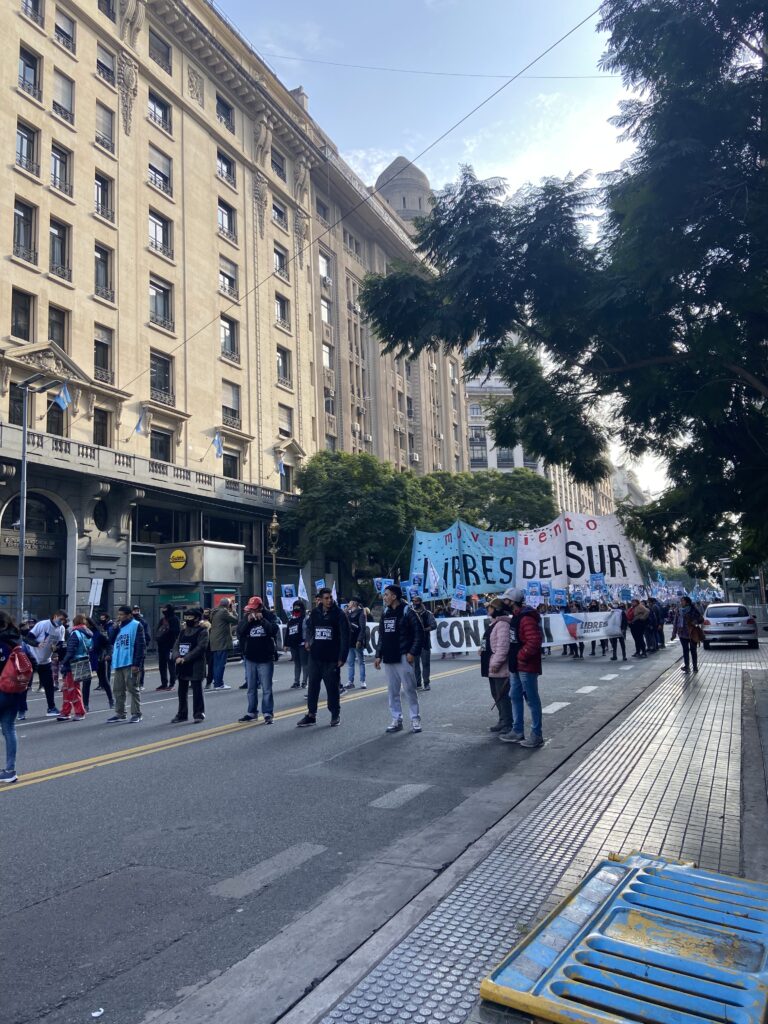
Arriving in Argentina: History and Political Mobilizations
Our group’s bonding started as soon as we met up at the Richmond International Airport on July 2nd: Emmy Giacoia, Astrid Garcia, Laina Lomont, and I travelled on the same flights to Buenos Aires. From our previous experience travelling to Spain and Gibraltar together as part of an embedded program with Professor Francie Cate-Arries, Emmy, Astrid, and I knew just how important our time at the airport can be for creating a bond in groups travelling together. The three of us quickly bonded with Laina, who we were meeting for the first time. Time flew by at our layover in New York as we shared stories of William & Mary, airport horrors from our previous Spain trip, and our experience in Hispanic Studies.
Once we arrived in La Plata, our group was split up and Emmy and I went to Eliana Bacci’s house where we were greeted by Eliana and two W&M students, Zoha and Ramona, who were spending the semester in La Plata. Before we could settle down in our room, Eliana told us we were having family lunch at her sister’s house. The first lunch is memorable because we met not only our host family, but their extended family. Even though at the time it was extremely overwhelming to meet so many new people, I will always be grateful that Eliana was so welcoming and inclusive from the start of our stay with her.
Our first week at the Comisión Provincial por la Memoria (CPM) started the very next day. Like Eliana, Malena and Diego were equally as inviting and allowed us to feel part of the CPM team from the beginning. The first week, we explored the history of the CPM and Argentine dictatorships. I had never studied Argentina in depth, but I quickly found myself captivated by the stories we were hearing from the team at the CPM and the guests that they brought in to speak.
Specifically, I remember hearing the stories of two women who had family members that were disappeared during the last dictatorship. I appreciated how they emphasized that people who were disappeared cannot be assumed dead—until evidence is found, the disappeared are assumed to be alive. One of the speakers shared that many of the women disappeared by officials were pregnant and their children were also disappeared. That was very impactful, since they also noted that many of the children are still missing today. What makes this so moving is the fact that it all happened so recently, and people are still trying to cope with the trauma and grief of losing their loved ones without an explanation.
Although it is in a completely different context, I saw parallels in the stories of the disappeared in Argentina in my own research on femicidio in Mexico. Just as family investigation and unity played, and keeps playing, an important role in Argentina through organizations like the Madres and Abuelas de Plaza de Mayo, families play an important role in getting justice for victims of femicidio because of the impunity given to their perpetrators and the lack of investigation by government and security forces.
During our first weekend in Argentina, the group took a trip to Buenos Aires. We visited Plaza de Mayo and spontaneously became part of a protest. When we first arrived at the plaza, the space was calm with a few tourists dispersed throughout the area. As we were leaving, we heard drums in the distance and saw a group of people walking toward us. We stopped and observed what was happening around us. What we saw was powerful: multiple left-wing organizations were coming together at the plaza—each organization came out of a different street leading up to the plaza and met in the middle. The political mobilization was thrilling. It was, without a doubt, the liveliest mobilization I have ever been a part of. We ended up staying at the plaza for part of the event. There, we met a couple named Wally and Monica; I believe both were professors, and they explained a bit about the history of mobilization and politics in Argentina to us.
Two things I discovered these first few weeks: 1) I’m starting to love Argentina and 2) drums should be more widely incorporated in protests in the United States.





